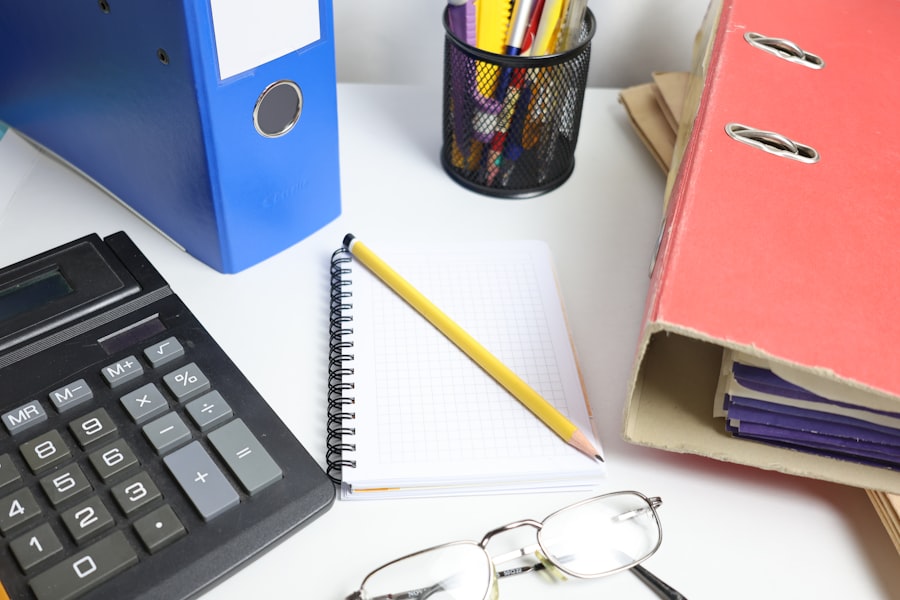Navigating the world of student loans can be daunting, especially when it comes to understanding collection practices. When you take out a student loan, you enter into a binding agreement to repay the borrowed amount, along with any interest accrued. If you fail to make payments on time, your loan may enter a collection phase.
This typically occurs after a period of delinquency, which is usually around 270 days for federal loans. During this time, your loan servicer will attempt to contact you to resolve the issue, but if you remain unresponsive or unable to pay, your account may be handed over to a collection agency. Collection practices can vary significantly depending on whether your loans are federal or private.
Federal loans are generally subject to stricter regulations, which are designed to protect borrowers. For instance, federal agencies must follow specific guidelines when attempting to collect debts, including providing you with written notice of the debt and your rights. On the other hand, private lenders may have more leeway in their collection methods, which can sometimes lead to aggressive tactics.
Understanding these differences is crucial for you as a borrower, as it can help you navigate the complexities of loan repayment and avoid falling into default.
Key Takeaways
- Defaulting on student loans can lead to wage garnishment, tax refund offsets, and damaged credit scores.
- Federal and private student loans have different collection practices and borrower protections.
- Communicating proactively with loan servicers and exploring repayment options can prevent default.
- Loan rehabilitation programs are available to help borrowers recover from default status.
- Understanding legal rights and utilizing available resources can assist borrowers in managing collections effectively.
The Consequences of Defaulting on Student Loans
Defaulting on your student loans can have severe repercussions that extend far beyond immediate financial distress. When you default, it means you have failed to make payments for an extended period, typically 270 days for federal loans. One of the most immediate consequences is the loss of eligibility for deferment or forbearance options, which can provide temporary relief from payments during financial hardship.
This loss can exacerbate your financial situation, making it even more challenging to regain control over your loans. Moreover, defaulting can lead to significant damage to your credit score. A lower credit score can hinder your ability to secure future loans, rent an apartment, or even obtain certain jobs.
Lenders view defaulted loans as a red flag, indicating that you may be a high-risk borrower. Additionally, the government has the authority to garnish your wages or seize your tax refunds to recover the owed amount. This means that not only will you face immediate financial strain, but your long-term financial health could also be jeopardized.
Options for Managing Student Loan Repayment

If you find yourself struggling with student loan repayment, it’s essential to know that there are various options available to help you manage your debt effectively. One of the first steps you should consider is enrolling in an income-driven repayment plan. These plans adjust your monthly payments based on your income and family size, making them more manageable during times of financial difficulty.
By opting for an income-driven plan, you can ensure that your payments remain affordable while still making progress toward paying off your loans. Another option is loan consolidation, which allows you to combine multiple federal loans into a single loan with a fixed interest rate. This can simplify your repayment process by reducing the number of payments you need to manage each month.
Additionally, consolidating your loans may extend your repayment term, which can lower your monthly payment but may result in paying more interest over time. It’s crucial to weigh the pros and cons of consolidation carefully and consider how it fits into your overall financial strategy.
How to Communicate with Loan Servicers and Collection Agencies
| Aspect | Best Practices | Key Metrics | Notes |
|---|---|---|---|
| Initial Contact | Use certified mail or documented phone calls | Response time: within 5 business days | Ensures proof of communication |
| Verification of Debt | Request written validation of debt | Validation must be provided within 30 days | Protects against inaccurate claims |
| Record Keeping | Keep detailed notes and copies of all correspondence | Maintain records for at least 7 years | Useful for dispute resolution |
| Communication Tone | Remain calm, polite, and professional | Positive communication increases resolution rate by 30% | Helps in negotiating better terms |
| Dispute Process | Submit disputes in writing within 30 days of notice | Dispute resolution time: up to 45 days | Legal right under Fair Debt Collection Practices Act |
| Payment Arrangements | Negotiate affordable payment plans in writing | Successful arrangements increase repayment likelihood by 50% | Always get agreements in writing |
| Know Your Rights | Familiarize with FDCPA and state laws | Reduces chances of harassment or illegal practices | Empowers effective communication |
Effective communication with loan servicers and collection agencies is vital when managing your student loans. When you receive notices about missed payments or potential default, it’s essential to reach out proactively. Start by gathering all relevant information about your loans, including account numbers and payment history.
This preparation will help you articulate your situation clearly when speaking with representatives. When communicating with loan servicers or collection agencies, be honest about your financial situation. Explain any hardships you are facing and inquire about available options for repayment or deferment.
It’s also important to document all interactions—keep records of phone calls, emails, and any agreements made during conversations. This documentation can serve as evidence if disputes arise later on and will help ensure that you are treated fairly throughout the process.
Understanding the Difference Between Federal and Private Student Loan Collection Practices
Understanding the distinction between federal and private student loan collection practices is crucial for managing your debt effectively.
For instance, federal agencies must provide borrowers with clear information about their rights and options before taking any collection actions.
They also offer various repayment plans and forgiveness programs that can ease the burden of repayment. In contrast, private lenders have more flexibility in their collection practices. They may employ aggressive tactics such as frequent phone calls or even legal action if payments are missed.
Additionally, private loans typically lack the same protections as federal loans; for example, they may not offer income-driven repayment plans or deferment options. As a borrower, it’s essential to understand these differences so that you can advocate for yourself effectively and seek out the best possible solutions for managing your loans.
The Process of Wage Garnishment and Tax Refund Offsets

Wage garnishment and tax refund offsets are two serious consequences that can arise from defaulting on student loans. When a loan goes into default, the government has the authority to garnish a portion of your wages without needing a court order. This means that a percentage of your paycheck will be withheld directly from your employer and sent to the loan servicer until the debt is repaid.
This process can create significant financial strain, as it reduces your take-home pay and may make it difficult to cover essential living expenses. Similarly, tax refund offsets occur when the government seizes your tax refund to apply it toward your defaulted student loans. If you were expecting a refund during tax season, this offset can come as an unwelcome surprise.
The government will notify you if this occurs, but it’s essential to understand that these actions are legal under federal law for defaulted loans. To avoid these drastic measures, staying proactive about managing your loans and seeking assistance early on is crucial.
How to Rehabilitate a Defaulted Student Loan
Rehabilitating a defaulted student loan is an essential step toward regaining control over your financial situation and improving your credit score. The rehabilitation process involves making a series of agreed-upon payments over a specified period—typically nine months—for federal loans. Once you complete these payments, the loan will be removed from default status and returned to good standing.
To begin rehabilitation, contact your loan servicer and express your desire to rehabilitate your loan. They will provide you with specific instructions on how many payments are required and what amount is necessary each month.
It’s important to adhere strictly to this plan; missing even one payment could result in losing progress toward rehabilitation. By taking this proactive approach, you can work toward resolving your default status and improving your overall financial health.
The Impact of Student Loan Default on Credit Score and Financial Future
Defaulting on student loans can have long-lasting effects on your credit score and overall financial future. When a loan goes into default, it is reported to credit bureaus, leading to a significant drop in your credit score—often by 100 points or more. A lower credit score can hinder your ability to secure future loans or credit cards and may even affect job opportunities in certain fields where credit checks are standard practice.
The implications of default extend beyond just credit scores; they can also impact your ability to achieve long-term financial goals such as homeownership or retirement savings. With a damaged credit profile, securing favorable mortgage rates becomes challenging, leading to higher monthly payments over time. Additionally, lenders may view you as a high-risk borrower, making it difficult to obtain financing for major purchases or investments in the future.
Understanding these consequences underscores the importance of managing student loans responsibly and seeking help if you find yourself struggling.
Legal Rights and Protections for Borrowers in Collection
As a borrower facing collection efforts for student loans, it’s essential to be aware of your legal rights and protections under federal law. The Fair Debt Collection Practices Act (FDCPA) provides guidelines that debt collectors must follow when attempting to collect debts from borrowers. For instance, they cannot engage in harassment or use deceptive practices when communicating with you about your debt.
Additionally, if you believe that a collector has violated any of these regulations, you have the right to file a complaint with the Consumer Financial Protection Bureau (CFPB) or take legal action against them. It’s crucial to know that you are not powerless in this situation; understanding your rights empowers you to advocate for yourself effectively during collection efforts.
Resources and Assistance for Borrowers Facing Student Loan Collection
If you find yourself overwhelmed by student loan collection efforts, numerous resources are available to assist you in navigating this challenging landscape. Organizations such as the National Consumer Law Center (NCLC) provide valuable information about borrowers’ rights and options for managing student debt effectively. Additionally, nonprofit credit counseling services can offer personalized guidance tailored to your specific financial situation.
Furthermore, consider reaching out to local legal aid organizations that specialize in student loan issues; they may provide free or low-cost legal assistance if you’re facing aggressive collection tactics or need help understanding your rights under the law. By utilizing these resources, you can gain clarity on your options and develop a plan for addressing your student loan challenges.
Tips for Avoiding Student Loan Default and Managing Repayment Effectively
Preventing student loan default requires proactive management of your finances and an understanding of available resources. One effective strategy is creating a budget that accounts for all monthly expenses, including student loan payments. By prioritizing these payments within your budget, you can ensure that they remain manageable even during times of financial strain.
Additionally, consider setting up automatic payments through your loan servicer; this can help ensure that payments are made on time each month without requiring constant monitoring on your part. If you’re experiencing financial difficulties, don’t hesitate to reach out to your loan servicer early on; they may offer deferment or forbearance options that can provide temporary relief while you work through challenges. By staying informed about your rights and options as a borrower and actively managing repayment strategies, you can avoid falling into default and secure a brighter financial future.
In recent discussions surrounding student loan collection practices, it’s important to consider the broader implications of these policies on borrowers. A related article that delves into the nuances of financial management and the impact of student debt can be found at this link. This resource provides valuable insights into how individuals can navigate their financial responsibilities while dealing with the complexities of student loans.
WATCH THIS! EXPOSED: The Tax-Free Real Estate Empire Funded By Your Student Loans
FAQs
What are student loan collection practices?
Student loan collection practices refer to the methods and procedures used by lenders or collection agencies to recover unpaid student loan debts from borrowers who have defaulted or fallen behind on their payments.
When do student loans go into collection?
Student loans typically go into collection after the borrower has missed payments for a certain period, usually 270 days (about nine months) for federal student loans. Private loans may have different timelines based on the lender’s policies.
Who can collect on defaulted student loans?
Both the original loan servicer and authorized collection agencies can collect on defaulted student loans. For federal loans, the Department of Education may assign collection agencies to recover the debt.
What are common collection practices for student loans?
Common practices include contacting the borrower via phone, mail, or email to request payment, reporting the default to credit bureaus, wage garnishment, tax refund offsets, and in some cases, legal action.
Are there limits on how collectors can contact borrowers?
Yes, collectors must follow the Fair Debt Collection Practices Act (FDCPA), which restricts harassment, limits contact times, and requires truthful communication. Federal student loan collectors must also comply with specific federal regulations.
Can student loan collectors garnish wages without a court order?
For federal student loans, the government can garnish wages without a court order through administrative wage garnishment. Private lenders typically need a court judgment before garnishing wages.
What options do borrowers have to stop or manage collections?
Borrowers can rehabilitate their loans, consolidate them, negotiate repayment plans, or apply for deferment or forbearance. Contacting the loan servicer or collection agency promptly is important to explore options.
How does student loan default affect credit scores?
Defaulting on student loans can significantly damage a borrower’s credit score, making it harder to obtain credit, rent housing, or secure employment. Collections are reported to credit bureaus and remain on credit reports for up to seven years.
Can student loan debt be discharged in bankruptcy?
Student loan debt is generally difficult to discharge in bankruptcy. Borrowers must prove undue hardship in court, which is a challenging legal standard to meet.
Where can borrowers get help with student loan collections?
Borrowers can seek assistance from the loan servicer, the Department of Education, nonprofit credit counseling agencies, or legal aid organizations specializing in student loan issues.
